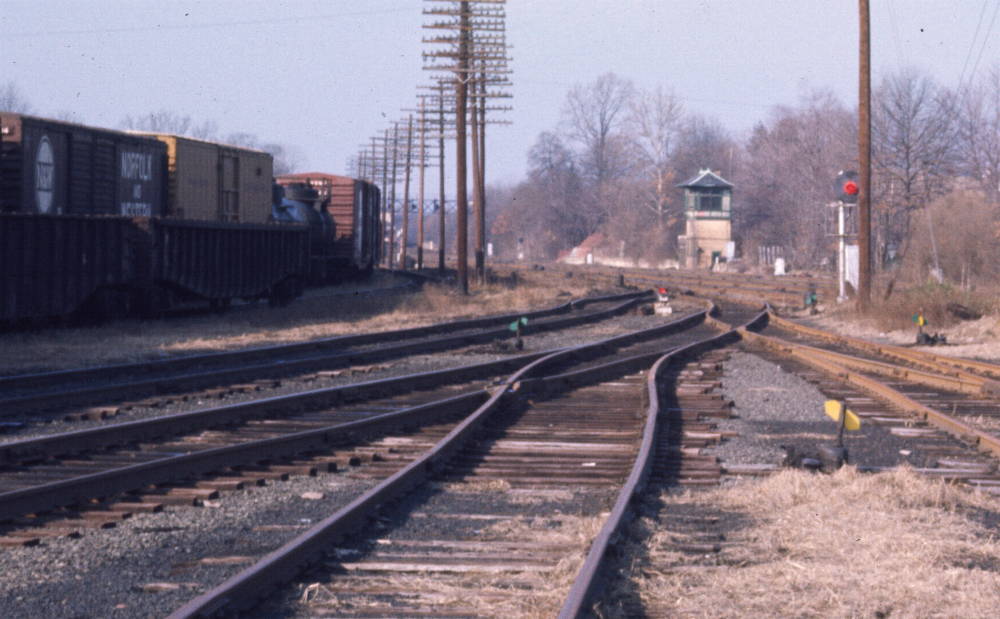 |
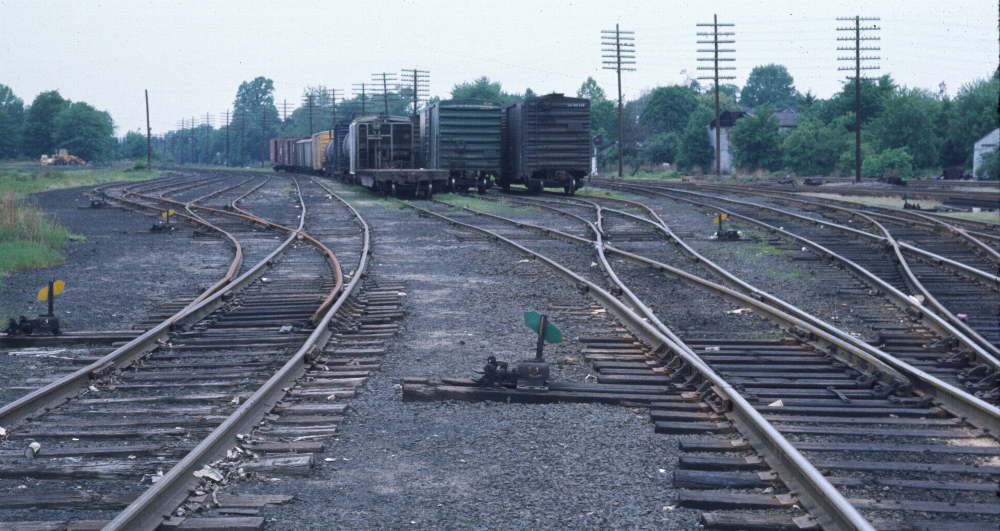 |
| The interchange
yard at Cranford Junction can be seen at the left, crammed with
cars. The Staten Island tracks, in the foreground, hitch up with the
CNJ just up ahead. The Excee Tower can also be
seen. |
Here we are looking west
at the interchange yard at Cranford Junction, with the tracks
heading to Staten Island at our backs. The CNJ mainline is just up
ahead. |
| The Rahway Valley
Railroad wasn't the only shortline to make a connection with
the Central Railroad of New Jersey in the Roselle
Park/Cranford area. The Staten
Island Rapid Transit Railway (SIRT), a subisdiary of
the Baltimore & Ohio
Railroad, made a connection with the CNJ here as
well. Their junction with the CNJ was called "Cranford Junction" while the
RVRR's was called Aldene (or Aldene Junction).
The SIRT, primarily located on Staten
Island in New York, offered commuter and freight service. An
extension from the island, across the Arthur Kill, and
through Linden, Roselle, and Cranford provided
interchange connections with the CNJ and Lehigh Valley
Railroad (a short distance from Cranford Junction, at
Staten Island Junction).
At the CNJ-SIRT connection at Cranford
Junction there was a large interchange yard which extended
alongside South Avenue and parallel to the CNJ mainline.
There was always a flurry activity here,
as both the CNJ and SIRT switched this yard regularly. The
SIRT often used EMD or Alco switchers to switch the junction
but bigger road switchers, from the B&O (the parent
company), could also be found here.
The Baltimore & Ohio Railroad, as
well as its Staten Island subsidiary, were absorbed into the
Chessie System in 1973.
The Chessie System looked to rid itself of unprofitable lines.
The Staten Island operations which had been losing money for
years, was a prime target of the new company.
The Chessie System continued to operate
freight service over the Staten Island Railroad (the name was
changed in 1971 when NYC took over the line's passenger
operations on Staten Island) until 1985. The Delaware Otsego Corporation was
contracted to operate the line, which they did until March 9,
1992. | |
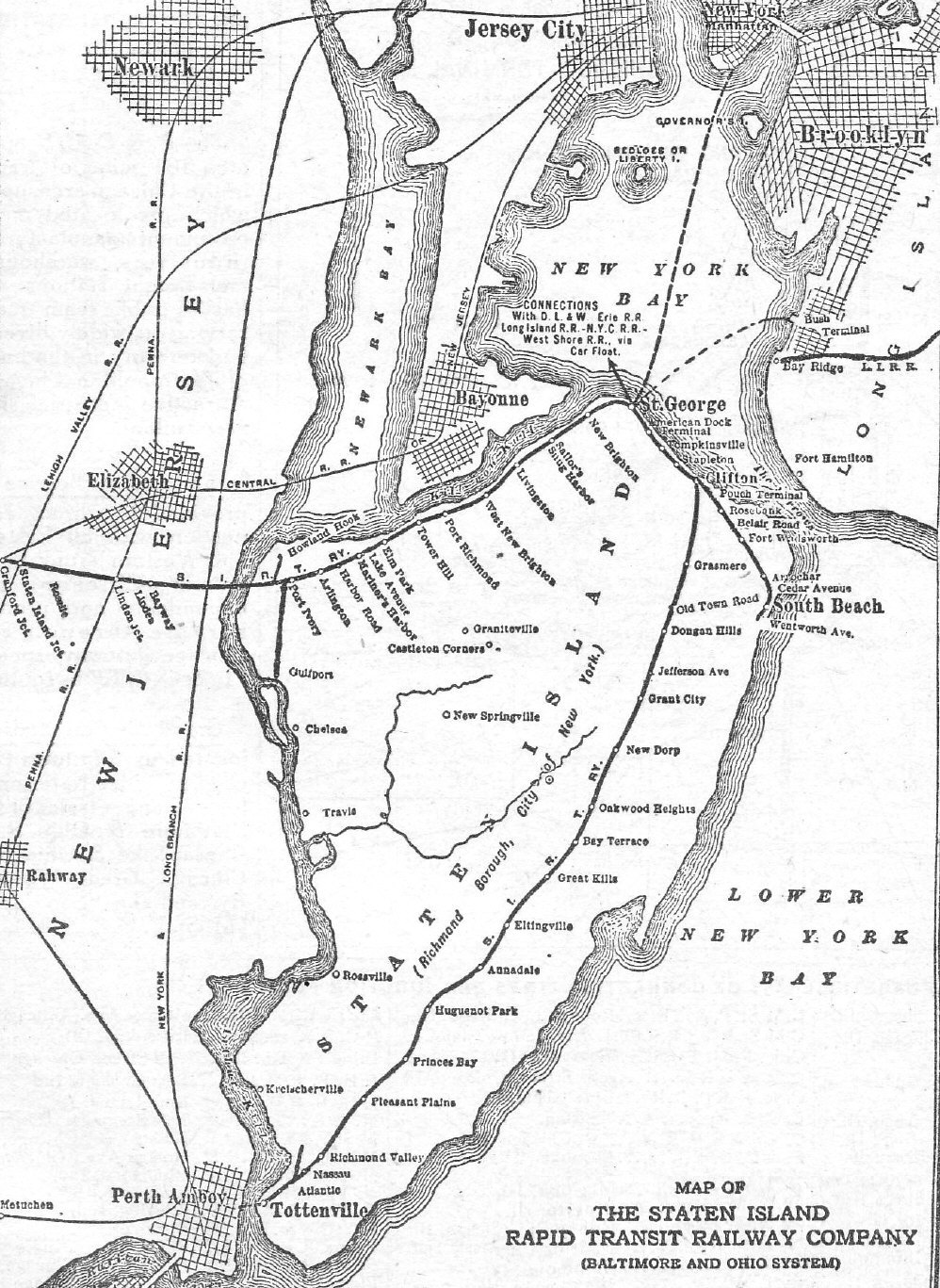 |
| This map shows the
Staten Island Rapid Transit Railway system, with its extension
into New Jersey where connections were made with the CNJ and
the
LV. | |
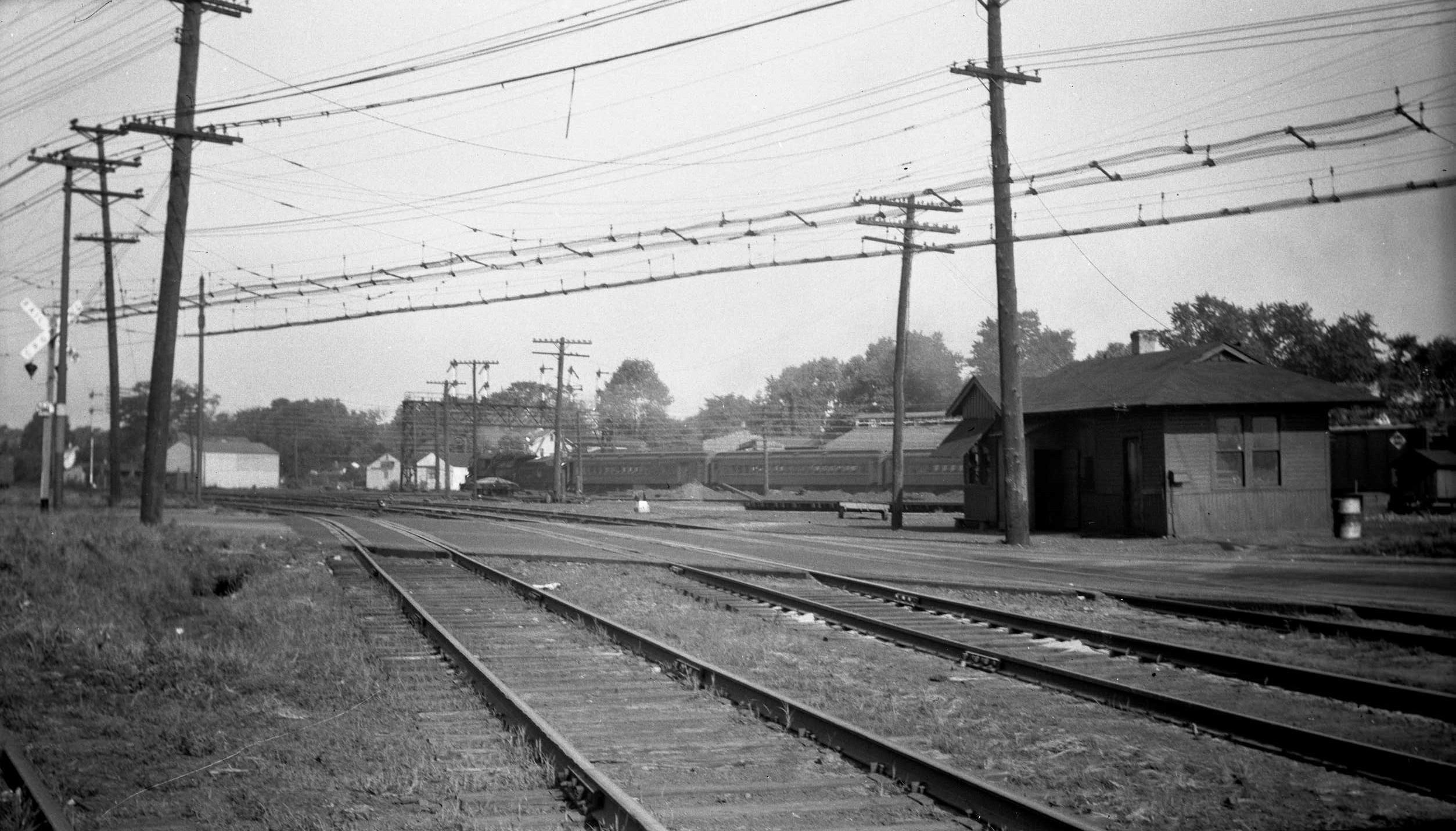 |
|
the photographer is
standing alongside the Staten Island (SIRT) tracks with the busy CNJ
mainline just up ahead. A CNJ passenger train, headed up by a
Camelback, can be seen heading towards Cranford Station. The SIRT's
tracks curve to the left and splay out into the many tracks of the
west Cranford Junction yard. Switching operations in the west
Cranford Junction yard often blocked South Avenue, sometimes for
hours. The flashing signals were for South Ave. were triggered by a
wooden lever switch located in the box mounted on the Staten
Island's Freight Agency station seen on the right. The Staten
Island's station here was strictly a Freight Agency Station,
although the SIRT briefly operated passenger service between Staten
Island, NY and Plainfield, NJ in the early 1900's. A third of the
Station Agent's pay came from the CNJ. Behind the agency station can
be seen the SIRT's Armstrong Turntable, used to spin the Staten
Island's steamers around and pointed back east towards Staten
Island. The mess of wires above the roadway are for Public Service's
#49 bus line, operated with electric buses (the successor to the
trolley). |
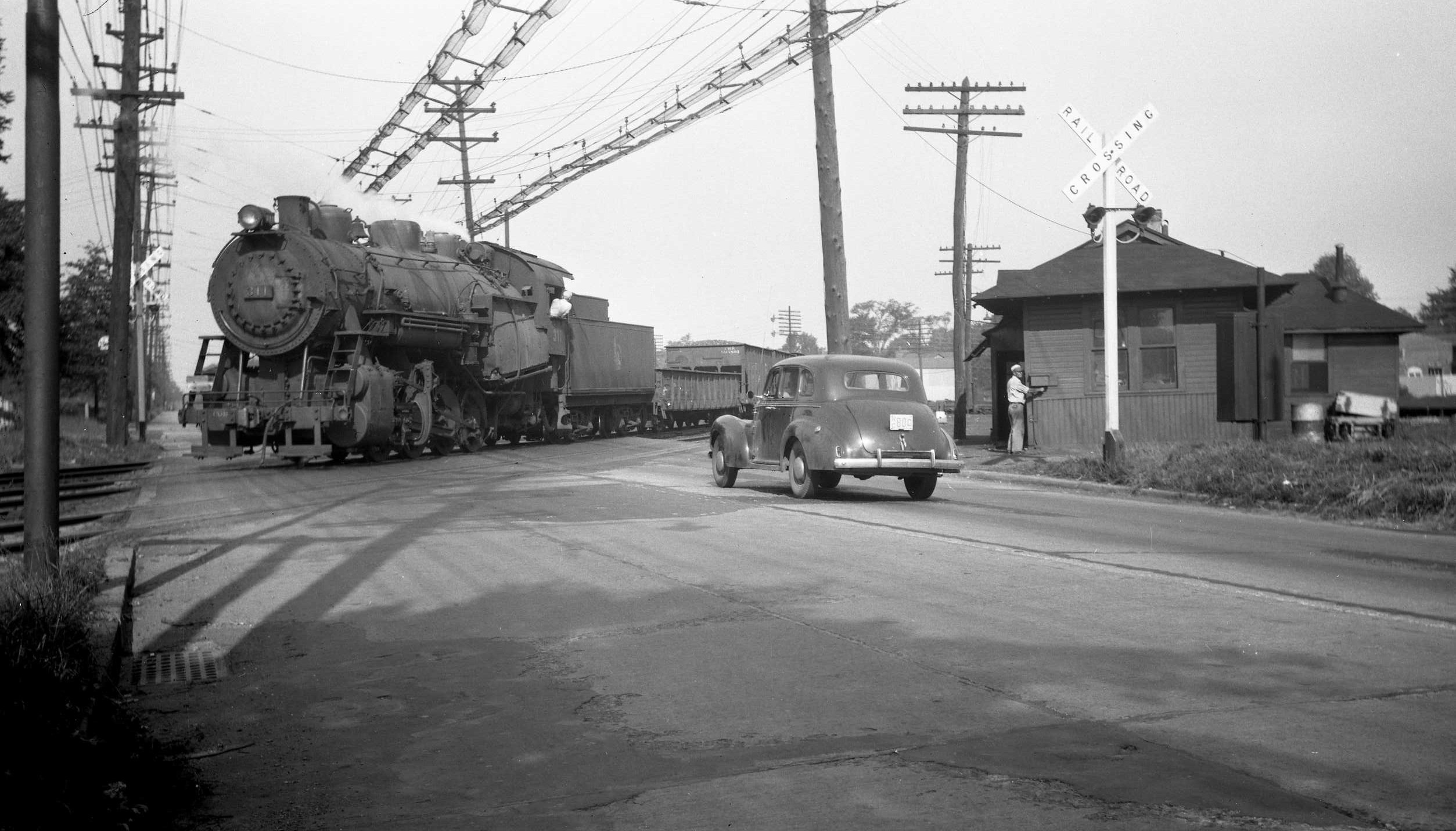 |
| Here we
see CNJ 0-8-0 switcher #311 using the Staten Island line as a lead
to switch the Cranford Junction yard. A motorist patiently waits for
the switcher to clear South Avenue. The highway flashers seen are
started and stopped manually. The brakeman stands at the control
box, on the outside of the agency station, ready to turn the signal
off after the crossing is clear. All photos courtesy of Steve
Lynch |
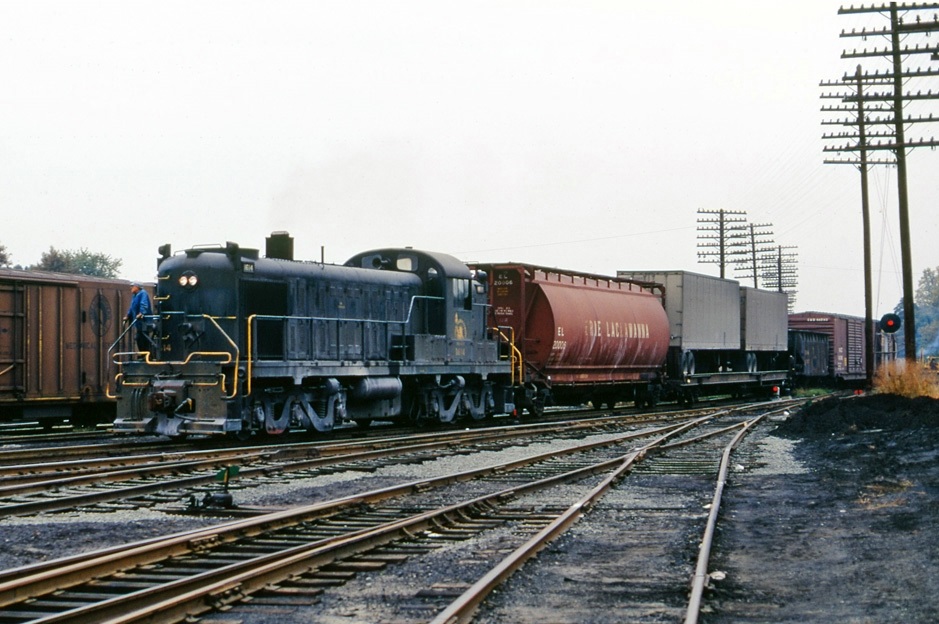 |
| CNJ ALCo
six axle RSD-4 #1614, on point of the "maybe freight," pulls into
Cranford Junction to drop cars for interchange. The "maybe freight"
was so called for the following reason, it left Jersey City early in
the morning and would be given so much work to do there was a
possibility it wouldn't finish before the crew had to punch out due
to the 12-hour law. The train would reach Cranford around 4 pm in
the afternoon. The train went out from Jersey City as JG-1 and
returned as JG-2. The train, with so much freight in tow, utilized
power such as the RSD-4 for their immense amount of tractive effort.
1971. Photo taken by Paul
Carpenito. |
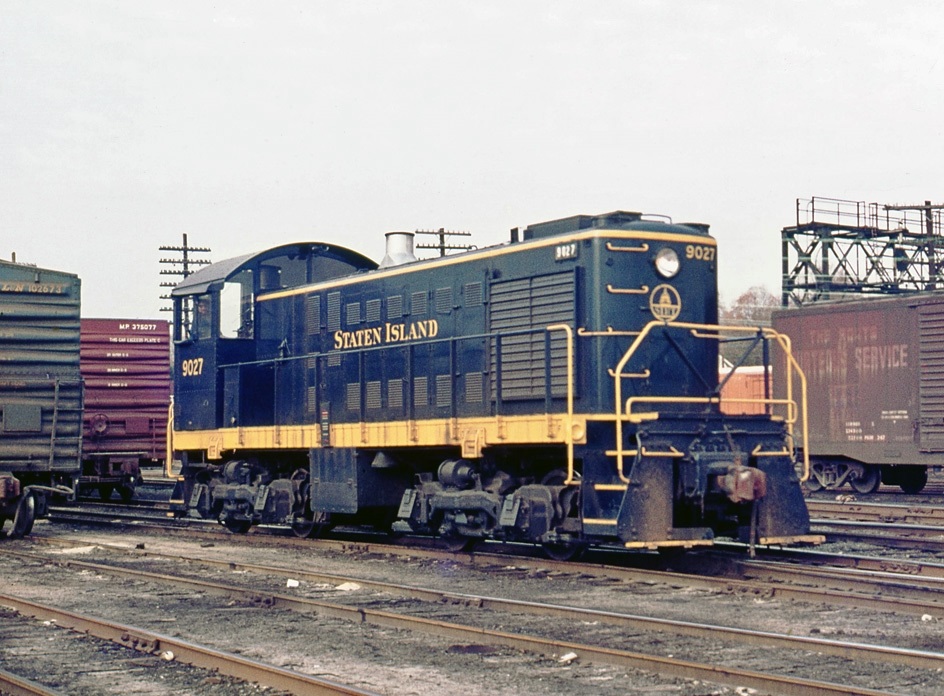 |
| Staten
Island Alco S-2 #9027, wearing a B&O inspired paint scheme,
switches the interchange yard at Cranford Junction. 1971.
Photo taken by Paul Carpenito. |
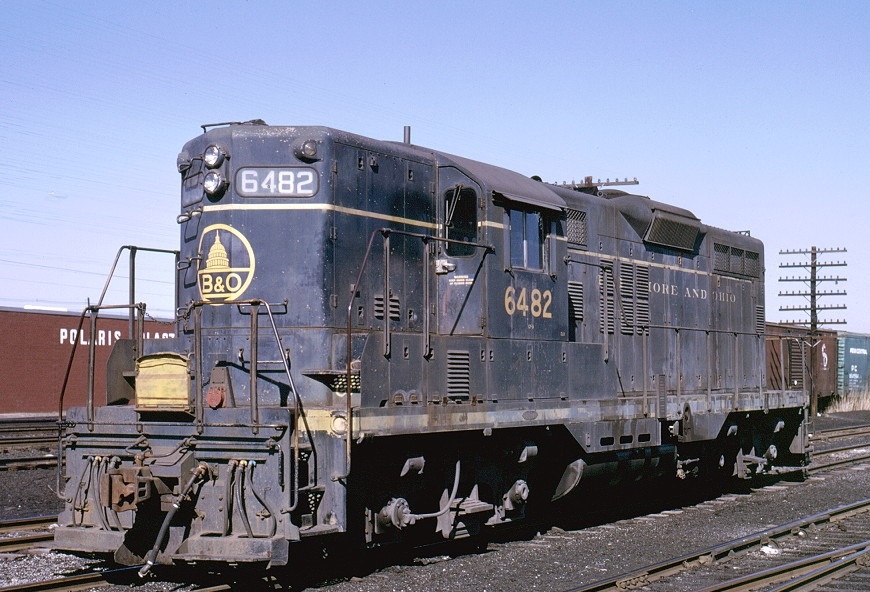 |
|
B&O GP-9 #6482
working at Cranford Junction.
Collection of Mike Woodruff. |
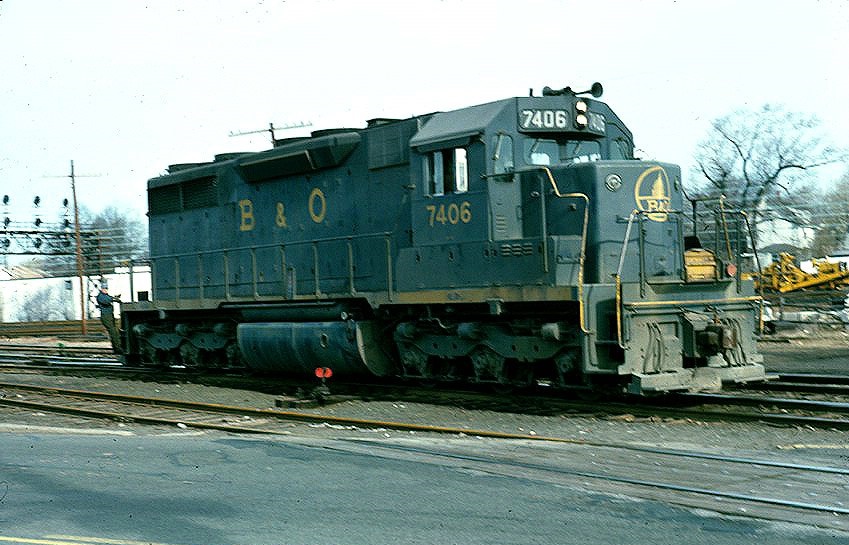 |
| B&O
SD-35 #7406 works the interchange at Cranford Junction. South Avenue
can be seen in the foreground. 3/7/1975. Collection of
John C. Durant. |
|

|
| Two
Chessie System GP-40-2's leave Cranford Junction after making the
Staten Island pickup. The Chessie System (and previously the
B&O) had trackage rights over the CNJ through here. Once Conrail
took over in 1976, the Chessie was only permitted to travel to
Cranford Junction to service their isolated piece of trackage
there. This photo was taken from inside Excee Tower. 7/28/1978.
Photo taken by John C.
Durant. |
 |
| Seen here is the last run of the
Reading's "Wall Street," being operated with a pair of Budd RDC's.
But what's more noticable is the absence of the Cranford Junction
Yard, which had been removed some time earlier due to the light
business being conducted. In a few years the Delaware Otsego would
take over the Staten Island's freight operations, as well as the
Rahway Valley's. 7/30/1981. Photo taken by Randy
Kotuby. |
|